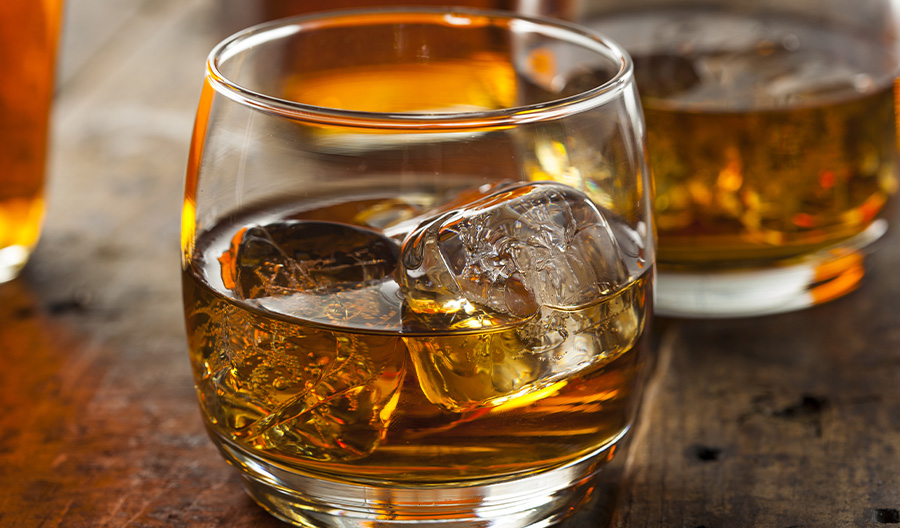Whether savored neat or mixed into an Old Fashioned or Mint Julep, bourbon may be the spirit most often associated with the United States. Designated “America’s Native Spirit” by a 1964 Congressional resolution, bourbon is nearly as old as the U.S. itself, with origins that date to the American Revolution, and likely further. The primarily corn-based whiskey has since become the stuff of songs, legends, and plenty of cocktails.
From common terminology like single-barrel and sour mash to designations like bottled-in-bond and small batch, here are the answers to some of your most commonly asked questions about bourbon.
What Defines Bourbon?
Bourbon is a type of primarily corn-based whiskey that is made in the United States and aged in new charred-oak barrels. Although it legally must contain 51% corn in the mash (or total makeup of grains), most bourbons are often made with anywhere from 60–86% corn. The other grains in a bourbon can vary, but may include rye, wheat, or barley. There are no regulations as to how long bourbon must age, but to be labeled straight bourbon it must age for at least two years in new charred oak.
OFFICIAL BOURBON REQUIREMENTS
Made with at least 51% corn in the mash bill
Aged in charred new oak barrels
Made in the United States
Distilled to a maximum of 160 proof (80% ABV)
Barreled at a maximum of 125 proof (62.5% ABV)
Bottled at a minimum of 80 proof (40% ABV) and a maximum of 150 proof (75% ABV)
No flavorings or colorings may be added

What’s the Difference Between Bourbon and Other Types of Whiskey?
Bourbon is a subcategory of whiskey, which is a catch-all term for a spirit that is distilled from a fermented grain mash, often stored in barrels before bottling. Bourbon legally must be distilled with a minimum of 51% corn. Whiskey can be made anywhere in the world, whereas bourbon is only produced in the United States. Compared to other types of whiskey, bourbon typically shows a sweeter profile, with notes of caramel and vanilla. The charred oak in which it ages has compounds like vanillins, lactones, and tannins, which are imparted into the liquid, giving bourbon its characteristic profile and color.
Bourbon usually has a heavier body and a sweeter, less spicy profile than rye whiskey (which also must be made in new charred oak barrels, but with at least 51% rye content, rather than corn). It is very similar to Tennessee whiskey, which also must be made from a mash bill that contains 51% corn and aged in new charred oak barrels. However, Tennessee whiskey must be made in Tennessee and typically undergoes a charcoal filtering process before maturation that produces a slightly mellower profile.

